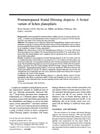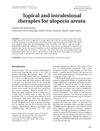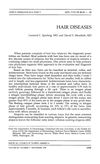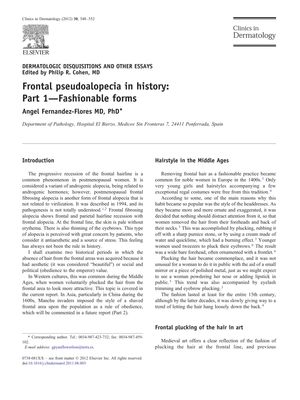TLDR In the Middle Ages, European noblewomen intentionally removed forehead hair to be fashionable, showing how beauty standards can affect the perception of hair loss.
The document examined how frontal pseudoalopecia, which mimics hair loss, was once a fashionable trend among European noblewomen during the Middle Ages. These women would intentionally remove hair from their foreheads to meet beauty standards of the time, employing methods such as plucking, using pumice stones, or applying quicklime. This trend was evident in medieval art, which often portrayed women with receded hairlines. The article highlights that cultural aesthetics can significantly influence the medical interpretation of conditions, noting that what is currently considered a dermatological issue was previously a sought-after look. The author credits Dr. Joyce Lee for her insights on similar practices among Chinese opera singers and the historical Chinese Queue hairstyle, emphasizing that societal and cultural factors have historically impacted the perception of alopecia.
54 citations
,
November 2007 in “Actas Dermo-Sifiliográficas” Early diagnosis of frontal fibrosing alopecia is crucial to prevent permanent hair loss.
 329 citations
,
January 1997 in “Journal of the American Academy of Dermatology”
329 citations
,
January 1997 in “Journal of the American Academy of Dermatology” Frontal fibrosing alopecia is a hair loss condition in postmenopausal women, similar to lichen planopilaris, with ineffective treatments.
 1 citations
,
June 2022 in “PubMed”
1 citations
,
June 2022 in “PubMed” Alopecia causes hair loss and should be treated early, especially scarring types where hair cannot regrow.
 2 citations
,
February 2021 in “The Journal of clinical and aesthetic dermatology”
2 citations
,
February 2021 in “The Journal of clinical and aesthetic dermatology” Understanding the cause of bitemporal hair loss is key to deciding the right treatment.
 6 citations
,
July 2019 in “Indian Journal of Dermatology”
6 citations
,
July 2019 in “Indian Journal of Dermatology” About 12% of children in Kota, Rajasthan, experience hair loss, mainly due to fungal infections, with early treatment advised to prevent worsening.
 August 2018 in “Oxford University Press eBooks”
August 2018 in “Oxford University Press eBooks” The document's conclusion cannot be provided because the document cannot be parsed.
1 citations
,
May 2016 in “Aktuelle Dermatologie” Trichoscopy helps monitor inflammation in Lichen planopilaris.
 36 citations
,
May 2011 in “Dermatologic therapy”
36 citations
,
May 2011 in “Dermatologic therapy” No treatments fully cure or prevent alopecia areata; some help but have side effects or need more research.
 28 citations
,
September 1998 in “Medical Clinics of North America”
28 citations
,
September 1998 in “Medical Clinics of North America” Most hair loss can be diagnosed with patient history and physical exam, and a few common types make up most cases.








